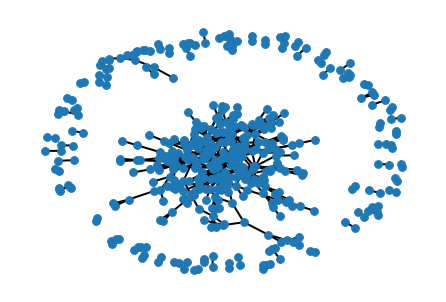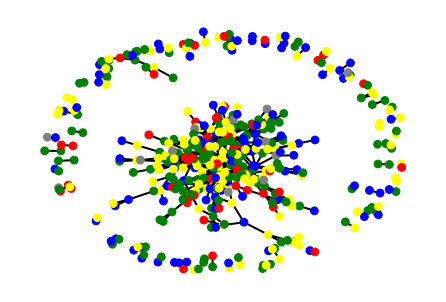Hello everyone, I've been part of this community for a while and I wanted to do something to showoff some interesting informations I find particulary relevant.
Since I am doing a small university project, I wanted to analyze a small dataset that would show a network of the various TMM 2v2 teams that play during a small slice of time, to see if there is anything special that stands out.
For this analysis I've picked up the TMM 2v2 tables from https://kazbek.github.io/FAF-Analytics/tmm2v2, specifically for the period of 30 days from 08/05/2022 to 07/06/2022 (Date is in D/M/Y format)
The data that was picked was:
- the player name, which was subsequently trasformed in an ID to anonymize the data
- the TMM 2v2 teams, which makes up the connection between the nodes
- the player TMM 2v2 rating
- the player TMM 2v2 most played faction
For the availability of this data I want to thank the FAF team for allowing me usage of this data and @Kazbek, for the amazing tool that he created.
So, let's start with the first graph

From this first view, the thing that strikes out the most is the structure of this graph, which is called a core-periphery structure, where near the center there is a thightly connected graph and around it a bunch of other small networks.
This already gives and idea of the types of groups present in TMM 2v2, some players only play TMM with another person or they just play it once, while others play with multiple friends or just enter matchmaker alone.
But, let's also see the faction and the rating distribuition

This is the faction graph, where each node is colored with their respective faction, so:
- blue -> UEF
- red -> Cybran
- green -> Aeon
- yellow -> Seraphim
At a quick glance, there isn't an overall most played faction, and most of the distribuition seems equal between all the factions, maybe with both aeon and uef having more picks than cybran and seraphim
Another note is that in the periphery there are teams that play mostly the same factions, being just a small amount of the overall selection.

This is the rating graph, where each node is colored with the respective rating bracket, so:
- rating < 200 -> red
- 200 <= rating < 700 -> yellow
- 700 <= rating < 1200 -> green
- 1200 <= rating < 1700 -> blue
- 1700 <= rating -> grey
As we can see, much of the graph is not uniform, there aren't many areas with same colors around the nodes and rating is not confined to a specific zone only, and the fact that some of the periphery networks do contain high rated nodes, which would confirm the fact that there are teams which do not search divided for a match
Thank you all for reading through, if you have question feel free to ask me anything.